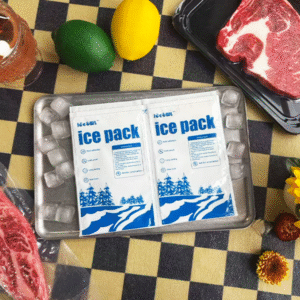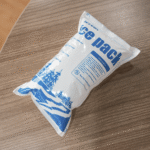Shipping temperature-sensitive goods like pharmaceuticals, seafood, and frozen foods requires efficient and reliable cooling solutions. Cooler dry ice pack sheets are rapidly becoming the gold standard in cold chain logistics. These flexible sheets filled with dry ice pellets provide ultra-low temperatures without creating meltwater, ensuring products stay frozen for extended periods. This article dives deep into the benefits, practical applications, and best practices for using dry ice pack sheets to elevate your cold chain shipping process in 2025.
-
What are the advantages of using cooler dry ice pack sheets for shipping?
-
How do dry ice pack sheets compare to other cooling methods?
-
What are the best practices for using dry ice pack sheets safely?
-
What are the latest trends in cooler dry ice shipping for 2025?
What Are Cooler Dry Ice Pack Sheets?
Cooler dry ice pack sheets are specially designed sheets filled with dry ice pellets. Unlike traditional ice or gel packs, dry ice does not melt but instead sublimates directly from a solid to gas at -78.5°C (-109.3°F). This sublimation process absorbs heat from the surrounding environment, keeping products at freezing temperatures without creating harmful liquid water that could damage packaging or contaminate goods. The design of these sheets allows them to fit easily into coolers, offering flexible and customized solutions to maintain the required temperature during shipping.
How Dry Ice Pack Sheets Work
-
Sublimation: At atmospheric pressure, CO2 transitions directly from solid to gas, absorbing latent heat. This results in a cooling effect without producing meltwater, making them ideal for transporting products like vaccines, seafood, and biologics.
-
Flexibility: These sheets are flexible, allowing them to conform to various shapes and sizes of packaging. They can be cut or combined to match cooler dimensions and cooling duration.
| Feature | Description | Benefit for You |
|---|---|---|
| Ultra-low temperature | Dry ice stays at -78.5°C (-109.3°F) | Keeps products like pharmaceuticals frozen for up to 48 hours |
| No meltwater | Sublimates directly to gas | Ensures dry packaging, avoiding soggy boxes and contamination |
| Customizable design | Flexible, can be cut to size | Perfect for irregular items or customized cooler sizes |
| Reusable | Can be reused multiple times | Offers cost savings for frequent shipments |
Why Choose Dry Ice Pack Sheets Over Traditional Cooling Methods?
Longer Cooling Duration
Dry ice pack sheets are unmatched in their ability to maintain temperatures as low as -78.5°C for 24-48 hours, ideal for long-distance or time-sensitive shipments like pharmaceuticals, seafood, and biologics. In contrast, gel packs and ice melt quickly, leading to temperature fluctuations and potential spoilage.
No Meltwater
Traditional ice and gel packs tend to create water as they melt, which can damage packaging and labels. Dry ice, on the other hand, sublimates into gas without any liquid residue, ensuring that your products stay dry and intact throughout the shipping process.
Lightweight and Cost-Effective
Dry ice is lighter than traditional ice or gel packs, reducing overall shipping weight and helping to lower transport costs. For businesses looking to streamline their shipping processes, this is a significant benefit.
Real-Life Example:
A seafood supplier using dry ice pack sheets for overnight deliveries reported a 30% reduction in spoilage compared to using traditional ice packs, resulting in improved product quality and customer satisfaction.
Best Practices for Using Cooler Dry Ice Pack Sheets
Proper Activation and Freezing Time
Before use, ensure that the dry ice pack sheets are fully frozen to maximize their cooling duration. Pre-chilling the container, such as using block ice, can help optimize the dry ice’s effectiveness.
Sizing and Packing
Choosing the right number of dry ice pack sheets is crucial. Typically, 1-2 pounds of dry ice per 24 hours is recommended for short shipping distances. Longer shipments or warmer climates require more dry ice to maintain optimal temperature conditions.
Ventilation and Safety
Always ensure that the container is properly ventilated. Dry ice sublimates into CO2 gas, which can build up pressure in an airtight container, leading to potential hazards. Use microvented liners and leave 15-25% headspace in the container for safe gas release.
| Safety Consideration | Description | Recommended Action |
|---|---|---|
| Ventilation | CO2 gas buildup can be dangerous | Ensure proper airflow in and around containers |
| Personal Protective Equipment (PPE) | Handling dry ice can cause frostbite | Always wear gloves and goggles when handling dry ice |
| Storage | Dry ice sublimates when exposed to heat | Store dry ice in insulated, ventilated containers |
Trends Shaping Cooler Dry Ice Shipping in 2025
Sustainability Practices
With growing concerns about environmental impact, many businesses are turning to recycled CO2 for their dry ice. This practice helps reduce the carbon footprint of shipping operations, aligning with sustainability goals.
Smart Packaging Technology
The use of IoT sensors and AI-driven algorithms is transforming the cold chain industry. These technologies allow for real-time tracking of temperature, CO2 levels, and dry ice mass, ensuring the efficiency and safety of shipments.
Market Growth and Demand for Fresh Products
The demand for fresh, high-quality goods continues to rise. E-commerce platforms and industries like biotech and pharmaceuticals are increasingly relying on dry ice solutions to meet consumer expectations for fresh deliveries.
Commonly Asked Questions
How long can dry ice maintain a cold temperature during shipping?
Dry ice can maintain temperatures for 18-24 hours, depending on the quantity and insulation used. For longer trips, more dry ice may be required.
Can I use dry ice without special qualifications?
While dry ice is safe to use, it is recommended to consult with logistics providers to ensure compliance with safety regulations and proper handling.
Conclusion and Recommendations
In conclusion, cooler dry ice pack sheets provide an excellent solution for shipping perishable goods. With their ability to maintain ultra-low temperatures, prevent residue, and reduce shipping weight, they are an ideal choice for businesses looking to ensure the safe transport of temperature-sensitive products.
Next Steps:
-
Evaluate Your Shipping Needs: Consider the temperature requirements and shipping duration for your products.
-
Implement Dry Ice Solutions: For businesses shipping perishable goods, implementing dry ice solutions can improve efficiency and reduce spoilage.
-
Consult with Experts: Reach out to experts in dry ice logistics for tailored advice on optimizing your cold chain operations.
About Tempk
Tempk specializes in providing advanced cold chain solutions for the transportation of perishable goods. Our dry ice pack sheets, along with our custom packaging solutions, ensure the safe and efficient delivery of temperature-sensitive products. With a focus on sustainability and innovation, Tempk is your trusted partner in cold chain logistics.
Contact Us:
For personalized advice and solutions, contact our expert team today and learn how we can help optimize your cold chain shipping with dry ice.
























